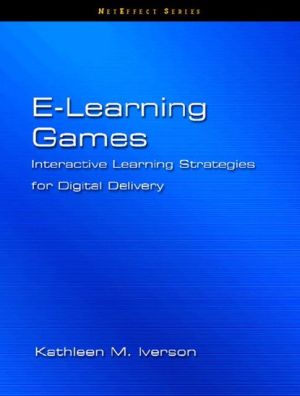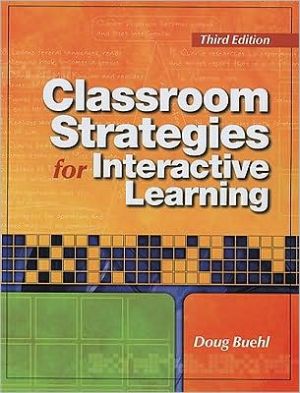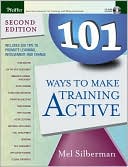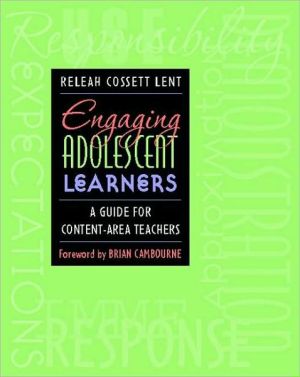E-Learning Games: Interactive Learning Strategies for Digital Delivery
E-Learning Games is a tool or resource for trainers and teaching professionals that guides the design of engaging and interactive e-learning courses. The strategies described here will engage learners in a way that will make them want to learn. Wide ranges of effective techniques are offered for a variety of circumstances from interviewing to goal setting through problem solving and team building and more!
Search in google:
Based on principles of constructivism and grounded in instructional design theory, this book contains games, simulation exercises, experiential activities, and other active learning approaches that will guide users as they create courseware that is engaging and interactive.It contains openers, closers, practice exercises, simulations, peer learning activities, and idea generators that will engage e-learners from their first click—and keep them returning again and again,A valuable resource to training professionals seeking to deliver workplace learning in an efficient and effective manner.
The mere imparting of information is not education. Above all things, the effort must result in making a man think and do for himself.\ Carter G. Woodson\ A guiding principle that most educators and trainers agree upon is that education is not information, and this premise holds true in both traditional and electronic delivery. As classroom trainers and teachers, we know that we must actively engage our participants if we are to keep them motivated and involved in the learning process. How do we take the same active, accelerated, collaborative techniques that have made our classroom training come alive and apply them to a web-based environment? E-Learning Games fills a significant gap in the web-based training design literature by offering a variety of active learning games, simulations, openers, closers, content review exercises, and idea generators that can be readily implemented in most online courses. These activities will engage learners from their very first click and keep them coming back for more. If you believe that learning happens through interaction and collaboration and is a dynamic, creative process that involves the true exchange of ideas, not simply the accumulation of facts with precious little guidance on how to apply them, then you will find the principles in this book useful. The practices presented in E-Learning Games facilitate interaction and collaboration so that designers might create dynamic e-learning courses that put learners in the driver's seat of their development.\ E-learning naysayers have expressed valid concerns about the cost, engagement, and quality of e-learning, frequently stating, "It is tooexpensive. I can't spend $50,000 designing a ten-minute training program!" "It's boring. My learners will fall asleep at their computer screens." "My students won't learn as much as they will in the classroom." As designers and educators, we must overcome this negativity with quality, low cost, and highly effective courseware. The goal of this book is to guide the rapid design and delivery of interesting, engaging, highly interactive e-learning environments that facilitate knowledge construction.\ Until recently, most interaction in web-based training environments was technologically driven. Intelligent tutors, video, audio, and animated graphics were the accepted vehicles for adding interest and excitement to otherwise bland and boring script-based training. Although these advances are valuable, they come with a price in both development time and dollars. E-Learning Games contains ideas and practices that will add excitement to courseware without considerable expenditure of resources. Relying primarily on low-tech vehicles such as synchronous and asynchronous chat, e-mail, and instant messaging, the activities described in this textbook can be implemented in web-based training and educational courses alike.\ In using this book, begin by carefully reviewing Chapters 1 through 3 to gain perspective on the premises that guide interactivity and motivation in e-learning. Here you will review principles of constructivism, instruction design, and web-based interaction so that you might apply them to your courseware. You will find useful tables and checklists to help you quickly plan quality e-learning products. Chapters 4 through 10 contain games, exercises, activities, and simulations that may be readily added to your course content to generate opportunities for collaboration, practice, and knowledge creation.\ The ideas presented here will put the "learning" back in your e-learning courseware, motivating your participants to put forth the effort to "think and do" as they construct valuable and useful knowledge.
Ch. 1Welcome to active e-learning1Ch. 2Interactive e-learning5Ch. 3Constructivist e-learning design19Ch. 4Session openers37Ch. 5Scenario learning activities65Ch. 6Peer learning89Ch. 7Content review and practice105Ch. 8Group discussion143Ch. 9Idea generation153Ch. 10Closers163Addendum ARecommended freeware and software trials175Addendum BE-learning design checklist179Addendum CCreating and delivering e-learning games181Addendum DExamples of learning activities185








